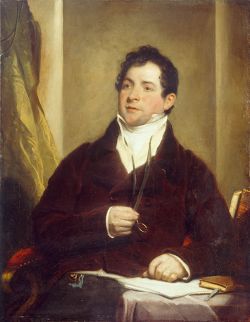Annotation:Last Rose of Summer (The): Difference between revisions
No edit summary |
No edit summary |
||
| (8 intermediate revisions by 3 users not shown) | |||
| Line 1: | Line 1: | ||
---------- | |||
---- | {{TuneAnnotation | ||
|f_tune_annotation_title=https://tunearch.org/wiki/Annotation:Last_Rose_of_Summer_(The) > | |||
'''LAST ROSE OF SUMMER, THE'''. AKA and see "[[Groves of Blarney (The)]]." Irish, Air. F Major. Standard tuning (fiddle). AABA. "'Tis the last rose of summer" is the title of a song by Thomas Moore [http://en.wikipedia.org/wiki/Thomas_Moore], and appears in '''A Selection of Irish Melodies''' (No. 4, Book 5, 1813), to the older tune of "The Groves of Blarney." | |f_annotation='''LAST ROSE OF SUMMER, THE'''. AKA and see "[[Groves of Blarney (The)]]," "[[Young Man's Dream (The)]]." Irish, Air. F Major (Howe, O'Flannagan): E Flat Major (Haverty): G Major (Scanlon). Standard tuning (fiddle). One part (O'Flannagan): AB (Haverty): AABA (Howe): ABBA (Scanlon). "'Tis the last rose of summer" is the title of a song by Thomas Moore [http://en.wikipedia.org/wiki/Thomas_Moore], and appears in '''A Selection of Irish Melodies''' (No. 4, Book 5, 1813), to the older tune of "The Groves of Blarney." Moore's volume has been described as a "veritable cornerstone of bourgeois 'popular song'"<ref>Scott, The Singing Bourgeois : Songs of the Victorian Drawing Room and Parlour, p. 25. </ref>, and was generally much admired in the parlor room, although a few songs were considered impolite in theme. | ||
<br> | <br> | ||
<br> | <br> | ||
See also Pipe Major William Robb's melodically similar retreat march "[[When the Battle's O'er]]." | |||
'' | |||
<br> | <br> | ||
<br> | <br> | ||
The tune was played for dancing (probably as a waltz) by a 1912 dance band in Orchards, Washington, led by fiddler Arthur D. Streeter. | |||
[[File:moore.jpg|250px|thumb|left|Thomas Moore (1779-1852)]] | |||
'' | |f_source_for_notated_version= | ||
|f_printed_sources=P.M. Haverty ('''One Hundred Irish Airs vol. 2'''), 1858; No. 187, p. 84. Howe ('''1000 Jigs and Reels'''), c. 1867; p. 114. O'Flannagan ('''The Hibernia Collection'''), 1860; p. 30. Batt Scanlon ('''The Violin Made Easy and Attractive'''), 1923; p. 24. | |||
|f_recorded_sources= | |||
|f_see_also_listing= | |||
}} | |||
'' | ------------- | ||
---- | |||
Latest revision as of 16:27, 10 November 2023
X:1 T:Last Rose of Summer, The M:3/4 L:1/8 R:Air Q:"Andante Affetuoso" B:P.M. Haverty – One Hundred Irish Airs vol. 2 (1858, No. 187, p. 84) Z:AK/Fiddler’s Companion K:Eb E>F|G2e2 (c>B) |(BG3) (E>F)|G2 (AG) {G}(F>E)|[G,4G4] (E>F)| G2e2 {d}(c>B)|(BG3) (E>F)|G2 (AG) {G}F>E|[G,4E4]|| (B>G)|e2 (e>d) {d}c>B|(B2G2) (B>G)|e2 (e/d/c/=B/)|c2 {=Bcd}!fermata!e2 (E>F)| G2e2 {d}(c>B)|(BG3) (E>F)|G2 (AG) {G}(F>E)|[G,4E4]||
LAST ROSE OF SUMMER, THE. AKA and see "Groves of Blarney (The)," "Young Man's Dream (The)." Irish, Air. F Major (Howe, O'Flannagan): E Flat Major (Haverty): G Major (Scanlon). Standard tuning (fiddle). One part (O'Flannagan): AB (Haverty): AABA (Howe): ABBA (Scanlon). "'Tis the last rose of summer" is the title of a song by Thomas Moore [1], and appears in A Selection of Irish Melodies (No. 4, Book 5, 1813), to the older tune of "The Groves of Blarney." Moore's volume has been described as a "veritable cornerstone of bourgeois 'popular song'"[1], and was generally much admired in the parlor room, although a few songs were considered impolite in theme.
See also Pipe Major William Robb's melodically similar retreat march "When the Battle's O'er."
The tune was played for dancing (probably as a waltz) by a 1912 dance band in Orchards, Washington, led by fiddler Arthur D. Streeter.

- ↑ Scott, The Singing Bourgeois : Songs of the Victorian Drawing Room and Parlour, p. 25.

